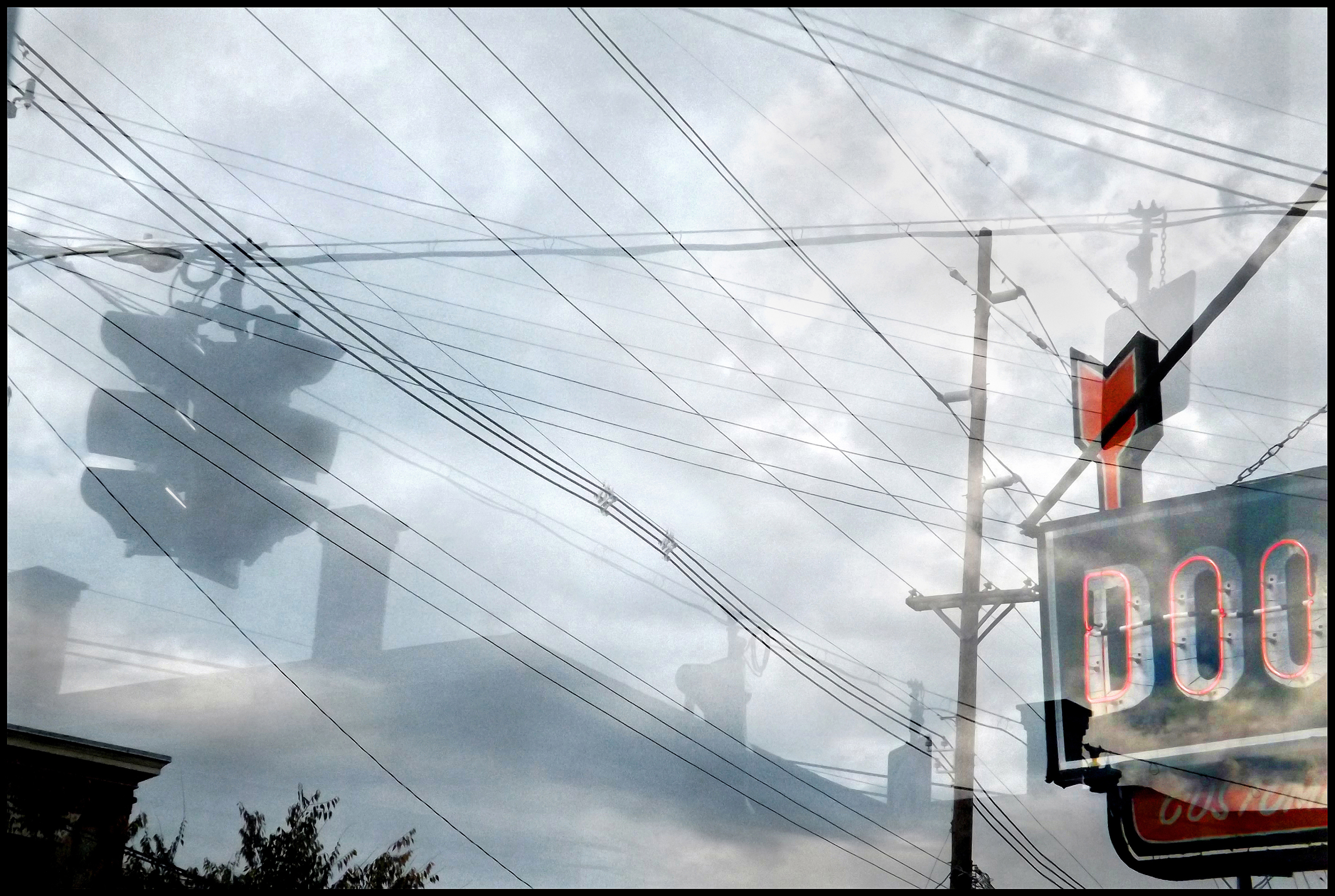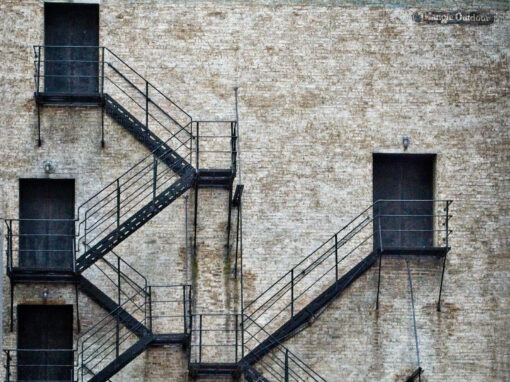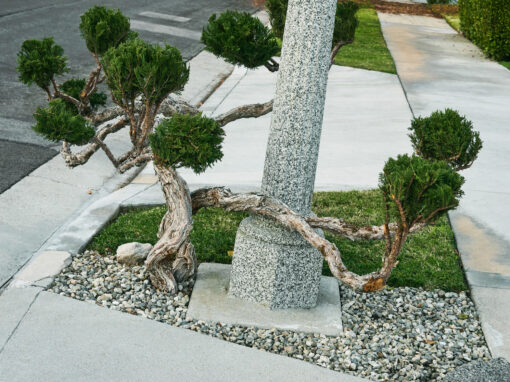This image is from my library. I took it a few years ago in Louisville, Kentucky. Louisville is a lovely city around 300 miles south of Chicago, where I live. Occasionally my wife and I drive down for a weekend getaway and a change of scenery. The city has a lot of visual interest for me, in part, because it hasn’t undergone redevelopment of its infrastructure to the extent that Chicago has. It may be that the money isn’t there for it. But the benefit visually is that you can still find utility lines hung over the streets,- crisscrossing in pattern’s.
Bardstown Road is full of interesting shops and restaurants housed in some of the old buildings. The way they are designed allowed me to look through the shop windows as well as to see the reflections that the street cast on them. Shooting through the window glass acted like an optical filter that softened and distorted details while it diffused them.
My approach to street photography places more emphasis on lines, shapes, patterns, texture and color than any social message, commentary on the human condition, or political statement. The perspective I used in making this image forces attention to the lines and patterns created by the wires, traffic light, chimneys and the lettering on the neon sign. Add a moody sky and other bits showing through the window and you have an intriguing juxtaposition of elements across multiple levels of depth. The result is a little surreal and abstract while maintaining enough of a sense of representational context to keep the image grounded in traditional genres.
What do you think are the TWO most impactful features that make your image a good photograph? Don’t be shy!
I was attracted to the dreamlike quality of the situation when I saw it. I’m not a documentary photographer, so my images are rarely about the apparent subjects in my pictures. In this case, the way that they all combined to make sense in the way that the absurd does, only in dreams, makes this a picture of something detached from the tangible, and exists more as a reality in the mind’s eye than in the real world.
I am aware that we make things, and find things in nature that we identify by their function or utility. All well and good, but why stop there? The tragedy of perception that we face is that once we think we know what we see, we stop looking. We miss a lot when we dismiss the familiar. “Nothing to see here. Move along.” is the attitude we sometimes practice. The second thing that appealed to me when I saw this image is the geometry of lines, curves, and shapes that presented themselves in their “form follows function” way. The way that they are revealed in their reflections and distorted through glass draws attention to the graphic elements in the situation.
If you would be able to make this photo once again, what would be the ONE thing you would like to do better or different?
I never consider any of my images as being finished. I continue to tweak ones that I began with exposures twenty years ago. This image was posted in its third revision, and since it was changed recently I’m rather pleased with it, for now. Previous versions didn’t feature as much color in the neon sign, dynamic range in the sky, and smoky detail in the reflections of the house, chimneys and traffic light. I may find something I want to change about it, tomorrow. And I always welcome suggestions.
Frank Styburski shared this photograph in the FRAMES Facebook Group.
Photographer
Frank Styburski, Chicago, IL USA
Equipment and settings
I used a small sensor camera to make this image – Fujifilm Finepix S4200. It has a crop factor of 5.6 compared to a 24mm X 36mm sensor. The focal length of the zoom lens was set at 11mm. That’s approximately 60mm in a 35mm film context. I sometimes use small sensor cameras because they allow me to use short focal lengths for better depth of field. In this case, it may not have been necessary. It’s what I had with me at the time.
The exposure time was 1/300 sec. ISO was 400.
Image processing in Adobe Photoshop Elements 6.




